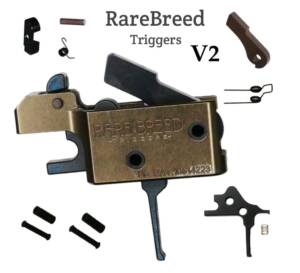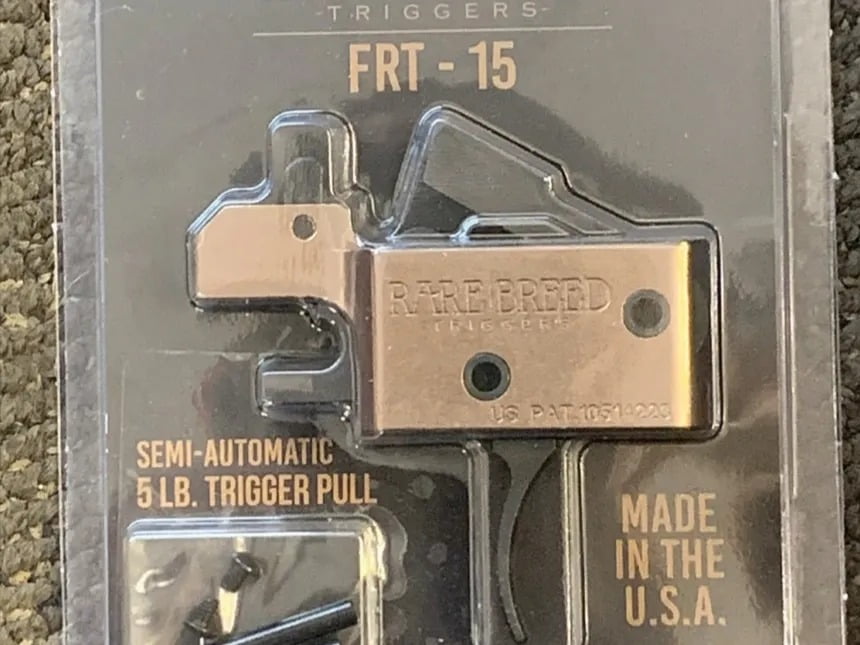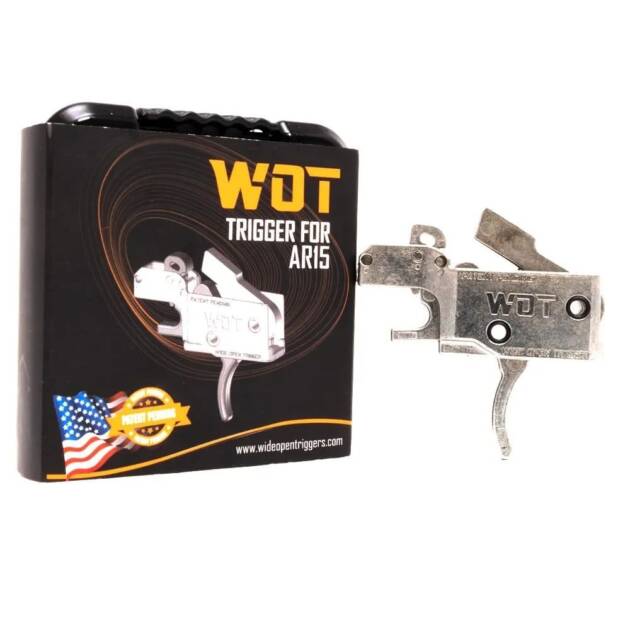Description
The Ultimate Guide to Forced Reset Triggers for AR-15 Rifles
When it comes to enhancing the performance of semi-automatic firearms, particularly the AR-15, the Forced Reset Trigger (FRT) stands out as a revolutionary innovation. This guide explores the intricacies of FRTs, their features, how they function, legal considerations, and much more. By the end, you will have a comprehensive understanding of Forced Reset Triggers and their impact on shooting practices.
What is a Forced Reset Trigger (FRT)?
A Forced Reset Trigger is a specialized trigger system designed to reset automatically after each shot is fired in a semi-automatic firearm. This unique mechanism allows for a significantly higher rate of fire while still maintaining the firearm’s legal classification. With the FRT, shooters can rapidly fire follow-up shots without the need for a full-auto conversion, making it an attractive option for enthusiasts and competitive shooters alike.
How Does the FRT Work?
The operation of a Forced Reset Trigger is both clever and efficient. At its core, the FRT utilizes a spring mechanism that interacts with the firearm’s bolt. Here’s a breakdown of how it functions:
Trigger Pull: When the shooter pulls the trigger, a shot is fired as the hammer is released.
Bolt Cycling: As the bullet exits the barrel, the bolt cycles back to eject the spent casing and chamber a new round.
Automatic Reset: During this cycling process, the FRT’s internal mechanism forces the trigger back into its reset position. This occurs almost instantaneously, allowing the shooter to pull the trigger again without waiting for manual reset.
Repeat: This process can be repeated as rapidly as the shooter can pull the trigger, resulting in an impressive rate of fire.
The design allows for a consistent trigger pull throughout the shooting process, which is crucial for maintaining accuracy during rapid fire.

Advantages of Using a Forced Reset Trigger
1. Increased Rate of Fire
The primary advantage of the FRT is the increased rate of fire it offers. Traditional semi-automatic triggers require the shooter to release the trigger fully before it can be pulled again. In contrast, the FRT allows for a quicker follow-up shot, making it a preferred choice for competitive shooting and tactical scenarios.
2. Consistent Trigger Pull
With an FRT, the consistency of the trigger pull is a significant benefit. Shooters can expect a similar feel with each shot, which is essential for accuracy, especially under pressure. The uniformity in trigger action allows for better control and precision, making it easier to stay on target.
3. Legal Compliance
While some shooting enhancements may lead to legal complications, the FRT is designed to remain compliant with federal regulations. Unlike fully automatic firearms, which require special licensing under the National Firearms Act (NFA), the FRT allows users to enjoy rapid firing capabilities without the legal hassles associated with full-auto conversions.
4. Enhanced Shooting Experience
For many shooters, the experience of using an FRT is exhilarating. The ability to fire quickly and accurately makes shooting more enjoyable, whether on the range or during competitive events. The FRT can transform the way shooters engage targets, providing a more dynamic shooting experience.
Notable Manufacturers of FRTs
Rare Breed Triggers
One of the most well-known names in the FRT market is Rare Breed Triggers. Their flagship product, the FRT-15, has gained a reputation for reliability and performance. Here’s what sets Rare Breed apart:
Quality Assurance: Rare Breed Triggers emphasizes rigorous quality control to ensure that each FRT-15 functions flawlessly.
User-Friendly Design: The FRT-15 is designed with simplicity in mind, making it easier for users to install and operate.
Customer Support: Rare Breed offers excellent customer support, providing assistance for installation and troubleshooting.
Other Manufacturers
While Rare Breed Triggers is a leading name, other manufacturers are also entering the FRT market. Brands like Franklin Armory and CMMG are noteworthy, each offering their unique take on the Forced Reset Trigger, catering to a diverse range of shooters and preferences.
Legal Considerations Surrounding FRTs
Federal Regulations
The legality of Forced Reset Triggers is a topic of significant interest among firearm owners. At the federal level, the Bureau of Alcohol, Tobacco, Firearms and Explosives (ATF) does not classify FRTs as machine guns, provided they operate within specific parameters. This classification allows them to be sold legally without the need for special licensing.
State and Local Laws
While FRTs may be legal federally, state and local laws can vary significantly. Some states have enacted stricter regulations regarding trigger modifications, and it’s essential for firearm owners to stay informed about their local laws. Here are some key considerations:
State Restrictions: Some states may prohibit the use of devices that enhance firing rates, including FRTs. Always check local regulations before making a purchase.
Ongoing Legal Challenges: The legal landscape surrounding FRTs is continually evolving. Recent court rulings or legislative changes could impact their legality, so it’s crucial to stay updated.
Installation of Forced Reset Triggers
Installing an FRT can be a straightforward process, but it requires careful attention to detail to ensure safety and functionality. Here’s a step-by-step guide to installing an FRT in your AR-15:
Step 1: Gather Your Tools
Before you begin, you’ll need some basic tools:
– A punch tool or hammer
– A screwdriver set
– Safety glasses
Step 2: Safety First
Always ensure your firearm is unloaded. Remove any ammunition from the workspace and follow all safety protocols.
Step 3: Remove the Existing Trigger
– Disassemble the Firearm: Follow the manufacturer’s instructions to disassemble your AR-15. – Remove the upper receiver from the lower receiver.
– Take Out the Trigger Assembly: Use the punch tool to remove the pins holding the trigger assembly in place. Carefully take out the existing trigger and hammer.
Step 4: Install the FRT
– Insert the FRT: Position the FRT in the trigger housing, ensuring it aligns correctly with the trigger pins.
– Secure the Trigger: Use the punch tool to reinsert the pins, securing the FRT in place.
Step 5: Reassemble the Firearm
Reattach the upper receiver to the lower receiver, ensuring everything is correctly aligned and secured.
Step 6: Function Test
Before firing, conduct a function test:
– Check the trigger pull.
– Ensure the reset mechanism works correctly.
– Dry fire to confirm proper operation.
Step 7: Live Fire Test
Once you’re confident in the installation, take your firearm to a safe shooting range to conduct a live-fire test. Start with a few rounds to ensure everything functions as intended.
Maintenance of Forced Reset Triggers
To keep your FRT operating smoothly, regular maintenance is essential. Here are some tips:
1. Clean Regularly
After each shooting session, clean the trigger assembly to remove any debris or residue. Use a soft cloth and appropriate cleaning solution to wipe down the FRT components.
2. Lubricate
Apply a light lubricant to the moving parts of the FRT to ensure smooth operation. Avoid over-lubricating, as excess oil can attract dirt and grime.
3. Inspect for Wear
Regularly inspect the FRT for signs of wear or damage. If you notice any issues, consult the manufacturer for guidance or replacement options.
Comparing FRTs to Other Trigger Systems
FRT vs. Binary Triggers
Binary triggers and Forced Reset Triggers are two popular options for enhancing the shooting experience. Here’s how they compare:
Binary Trigger: Fires once on the pull and again on the release, allowing for rapid fire but requiring a different shooting technique.
FRT: Fires only on the pull but resets quickly, providing a more traditional shooting experience with a higher rate of fire.
FRT vs. Traditional Triggers
Compared to traditional triggers, FRTs offer significant advantages in terms of firing rate and trigger consistency. Traditional triggers require a complete release before firing again, whereas FRTs allow for a rapid succession of shots.
Conclusion
The Forced Reset Trigger is a remarkable advancement in firearm technology, providing shooters with increased firing rates while remaining compliant with legal standards. Understanding the operation, advantages, and legal considerations surrounding FRTs is crucial for anyone looking to enhance their shooting experience.
By choosing a reputable manufacturer, ensuring proper installation, and maintaining your FRT, you can enjoy the benefits of rapid fire in a safe and responsible manner. Whether you are a competitive shooter or a firearm enthusiast, the FRT can significantly elevate your shooting capabilities.
Stay informed about regulations, practice responsible firearm ownership, and enjoy the exhilarating experience that comes with using a Forced Reset Trigger.







Reviews
There are no reviews yet.